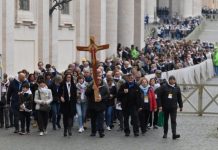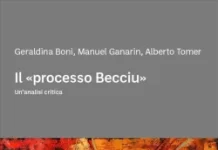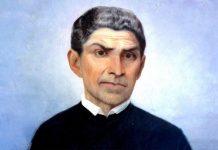Besides Cluny, the religious orders founded by Saint Romuald – Camaldulians – and Saint John Gualbert – Valombrosans – the Carthusians contributed to the splendor of the Middle Ages, which reached its apex in the 13th century.
Newsroom (10/10/2022 20:37, Gaudium Press) Born in Cologne, Germany, in 1030 the founder of the Carthusian Order, Saint Bruno was from a family of the highest nobility. As an adolescent, he went to Reims, France, where he studied philosophy and theology, achieving brilliant successes.
He became master in the cathedral of that city and among his pupils was a young man who became a monk of Cluny and, later, the blessed Pope Urban II, proclaimer of the First Crusade.
In 1076, St. Bruno was appointed chancellor of the Cathedral of Reims. Knowing that the archbishop was a simony, the saint denounced him and was therefore removed from office, losing the income he received.
Death of a famous professor at the University of Paris
While in the capital of France, in 1082, St. Bruno witnessed an extraordinary event that prompted him to become a religious.
A professor at the University of Paris, who enjoyed enormous prestige for his erudition and supposed virtues, died.
As the coffin was being brought into the chapel, the corpse sat up and, in a loud voice, declared that he had been accused by God.
The news spread, and the next day many people flocked to the place. The event was repeated, and the dead man affirmed that he had been judged.
On the third day, the dead man exclaimed in an astonished voice that he was condemned. Then, the authorities decided to throw his corpse in the trash.
Dr. Plinio Corrêa de Oliveira comments:
“It is a typically medieval scene, for the Middle Ages was the age of miracles. These miracles come to those who believe and not to the unbelievers, although it seems a paradox, because one would say that a miracle is for those who don’t have Faith.
“In times of great Faith, the miracle is abundant; in times of skepticism, it becomes rare. The only denial to this occurred in the 19th and 20th centuries, with the almost continuous miracles of Lourdes.”
His corpse was thrown in the trash. “According to St. Thomas Aquinas, when the end of the world comes, all sordid matter, garbage and other detritus that has not been burned will be thrown into Hell, because it is the trash can of the universe where all the souls and matter that is no good go.”
Prayer Flag
After witnessing these terrible scenes, St. Bruno gathered six friends and decided to leave the world and seek perfection. They made their way to Grenoble, in southeastern France, whose bishop, St. Hugo of Châteauneuf, had been a pupil of St. Bruno.
St. Hugo had a dream in which he saw an immense desert illuminated by seven stars, which showed him the way to a place where God the Father wanted to build a house to live in.
When, the next day, seven pilgrims came to prostrate at his feet, telling him of their resolution and asking him to help them, Saint Hugo understood the meaning of the dream and gave them the mountainous region called Chartreuse, situated near Grenoble.
On this site, about a thousand meters high, where there were frequent snowfalls and the soil was poor, St. Bruno erected a building in the year 1084.
“It may seem strange that the bishop should send such chosen souls into a horrible desert. But it was part of monastic life in the Middle Ages to fix the monks in swamps, forests, etc., because there they fought against the hostile aspects of nature by their work, while singing and giving glory to God for their virtue. And populations would reside near them, which constituted the thin edge of progress.
“Happy time when peoples ravaged the undergrowth and entered the deserts not in search of gold, but of virtue. How everything changed!
“It was a kind of prayerful flag-waving. They didn’t go looking for emeralds, but for virtue. What beauty! I don’t blame the search for emeralds, but I admire that of virtues.”
The cross stands while the world turns
Six years later, Blessed Urban II ordered St. Bruno to go to Rome and appointed him bishop of Reggio Calabria – Southern Italy. But he, availing himself of the right to refuse such an election, did not accept the office, for it was not his vocation.
After spending a year at the pontifical court, he obtained permission from the Pontiff to return to the contemplative life, but on Italian territory.
Thus, in 1091, St. Bruno founded a monastery in Calabria – Southern Italy – where he remained until his death. The work, like future foundations, was given the name “Carthusian,” in memory of the mother house.
Saint Bruno died on October 6, 1101. Of the almost 71 years of his life, he spent only 16 in the solitude he loved so much: six in the French Cartuscula and ten in the Italian.
On the Order’s coat of arms there are seven stars representing St. Bruno and his first six disciples, making a half-arc over an orb crowned by the cross, and the motto Stat crux dum volvitur orbis – The cross stands while the world turns.
Saint Pius X received very elderly Carthusians
The Carthusians lead a life of prayer and penance. They fast strictly and do not drink alcoholic beverages. However, they invented one of the most famous liqueurs in the world, Chartreuse, composed of 130 herbs. Its long preparation process, with four distillations and five infusions, is known only to two Carthusians.
“St. Pius X – pontificate from 1903 to 1914 – thought to reform their Rule, taking into consideration that the men of his time no longer had the strength of the men of old. Because of this, the Rule, made in the Middle Ages, might not suit them.
“The Carthusians then sent a delegation to St. Pius X, from various chartreuses of the world, to ask that the Rule not be mitigated […]; they were ten monks, all over 90 years old, strong, with long white beards.
“They prostrated themselves before the Pope and begged him not to alter the Rule, for they were the proof that the Carthusians would endure it.
“But St. Pius X, in his wisdom as a saint, and taking into consideration the debilitation of the human race, understood that the later generations entering the Order of the Carthusians – those were of the generation of the old, still endured – would not endure it any longer. So he made some changes, very measured and small, in the Rule of the Carthusians.”
The memory of St. Bruno is celebrated on October 6.
By Paulo Francisco Martos
Notions of Church History
Compiled by Camille Mittermeier.
The post São Bruno, Fundador da Cartuxa appeared first on Gaudium Press.
São Bruno, Fundador da Cartuxa
Além de Cluny, das Ordens religiosas fundadas por São Romualdo – camaldulenses – e São João Gualberto – valombrosanos –, os cartuxos contribuíram para o esplendor da Idade Média, que atingiu seu ápice no século XIII.
The post São Bruno, Fundador da Cartuxa appeared first on Gaudium Press.Read MoreEspiritualidade, 6 de outubro, Fundador da Cartuxa, SANTO DO DIA, São BrunoGaudium Press

































